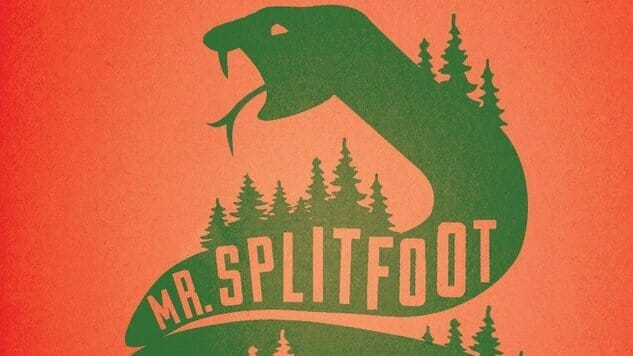Mr. Splitfoot by Samantha Hunt

Western New York’s Burned-over District, built and populated along the “psychic highway” of the Erie Canal, got its name from 19th-century evangelist Charles Finney, who deemed the district so exhaustively evangelized that it harbored no remaining souls to convert or religious fuel to burn. Historian Whitney Cross described district residents as “extraordinarily given to unusual religious beliefs, peculiarly devoted to crusades aimed at the perfection of mankind and the attainment of millennial happiness.”
Many of these movements coalesced around a single charismatic, prophetic or messianic figure, such as Joseph Smith, founder of the LDS church. According to legend, Smith was visited by an angel in Palmyra, New York in the late 1820s and directed to buried golden plates whose contents he later published as The Book of Mormon. Before he started talking to angels, Joseph Smith was better known for talking to ghosts, dabbling in séances and participating in other folk magic practices prevalent in the region.
 In May 1848, just east of Rochester in Hydesville, teenage sisters Kate and Margaretta Fox began a career as professional mediums when they claimed to have communicated—via “emphatic raps” on the floor of their family house—with a ghost later identified as Charles Rosna, a local peddler murdered five years earlier. Using a nickname for the devil popular among children in the area, Kate addressed Rosna’s ghost as “Mr. Splitfoot.”
In May 1848, just east of Rochester in Hydesville, teenage sisters Kate and Margaretta Fox began a career as professional mediums when they claimed to have communicated—via “emphatic raps” on the floor of their family house—with a ghost later identified as Charles Rosna, a local peddler murdered five years earlier. Using a nickname for the devil popular among children in the area, Kate addressed Rosna’s ghost as “Mr. Splitfoot.”
Samantha Hunt’s spooky and unnerving new novel, Mr. Splitfoot, concerns not the 19th-century Fox sisters but two 21st-century foster home siblings, Ruth and Nat. Together, they conduct séances for other resident orphans in which Nat summons “Mr. Splitfoot” to contact the children’s deceased parents.
-

-

-

-

-

-

-

-

-

-

-

-

-

-

-

-

-

-

-

-

-

-

-

-

-

-

-

-

-

-

-

-

-

-

-

-

-

-

-

-








































